USA/New England: Lake Placid, NY
Historic Heights
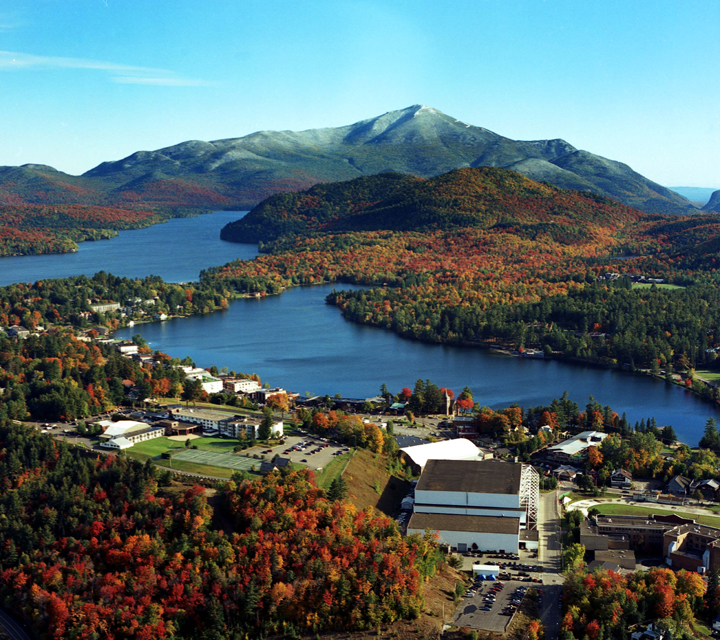 The history of Lake Placid, NY, is inextricably tied to winter sports—specifically, the Winter Olympics and the 1980 “Miracle on Ice,” when the U.S. Olympic hockey team beat a far more experienced Russian squad to shock the world and move on to the final round where they ultimately captured the gold medal.
The history of Lake Placid, NY, is inextricably tied to winter sports—specifically, the Winter Olympics and the 1980 “Miracle on Ice,” when the U.S. Olympic hockey team beat a far more experienced Russian squad to shock the world and move on to the final round where they ultimately captured the gold medal.
This wasn’t Lake Placid’s first brush with Olympic history. The town initially hosted the Winter Games in 1932, the opening ceremony presided over by then Governor Franklin D. Roosevelt, nine months before he was elected President. A young Sonja Henie won the gold as a member of Norway’s figure skating team, later becoming a Hollywood movie sensation. What Eric Heiden was to the 1980 Olympics, Henie was to the 1932 games.
While the area’s altitude and ideal winter climate made it a natural choice for the Winter Olympics, its mountain peaks, verdant valleys and cascading streams continue to make it a popular getaway spot for outdoor-lovers of all stripes and seasons.
Authentic Adirondack Ambience
Lake Placid’s remote location is definitely part of its charm, but don’t be fooled. For a small town (permanent population 2,500), it offers a wealth of big-city amenities and accommodations thanks to its Olympic history, with more than 1,000 rooms available in all shapes, sizes and types of venues.
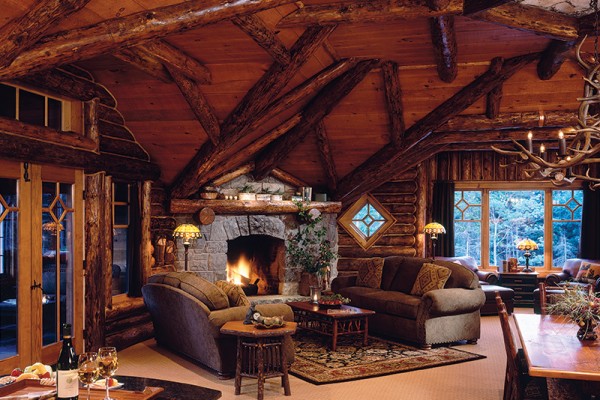 One prime example of Lake Placid lodging is Whiteface Lodge, a prototypical mountain hunting lodge—albeit one that has been updated, expanded and outfitted with every imaginable comfort and convenience. Constructed in 2005, Whiteface Lodge offers a total of 94 suites in ranging from one bedroom to three bedrooms, all with the appropriate and authentic Adirondack ambiance, augmented by fully-equipped kitchens, radiant-floor heat, jetted tubs, remote-control gas fireplaces, plush-top beds and flat-screen TVs. There’s also a full-service spa, gourmet restaurant, lounge and market, as well as a movie theater, bowling alley and ice skating rink (during winter months), among other top-flight amenities. Separate from the main Lodge, the property’s Club House offers meeting and event space for up to 200, with a full kitchen and heated, underground walkway for cold-weather gatherings, as well as a 3,100-square-foot enclosable terrace for outdoor occasions.
One prime example of Lake Placid lodging is Whiteface Lodge, a prototypical mountain hunting lodge—albeit one that has been updated, expanded and outfitted with every imaginable comfort and convenience. Constructed in 2005, Whiteface Lodge offers a total of 94 suites in ranging from one bedroom to three bedrooms, all with the appropriate and authentic Adirondack ambiance, augmented by fully-equipped kitchens, radiant-floor heat, jetted tubs, remote-control gas fireplaces, plush-top beds and flat-screen TVs. There’s also a full-service spa, gourmet restaurant, lounge and market, as well as a movie theater, bowling alley and ice skating rink (during winter months), among other top-flight amenities. Separate from the main Lodge, the property’s Club House offers meeting and event space for up to 200, with a full kitchen and heated, underground walkway for cold-weather gatherings, as well as a 3,100-square-foot enclosable terrace for outdoor occasions.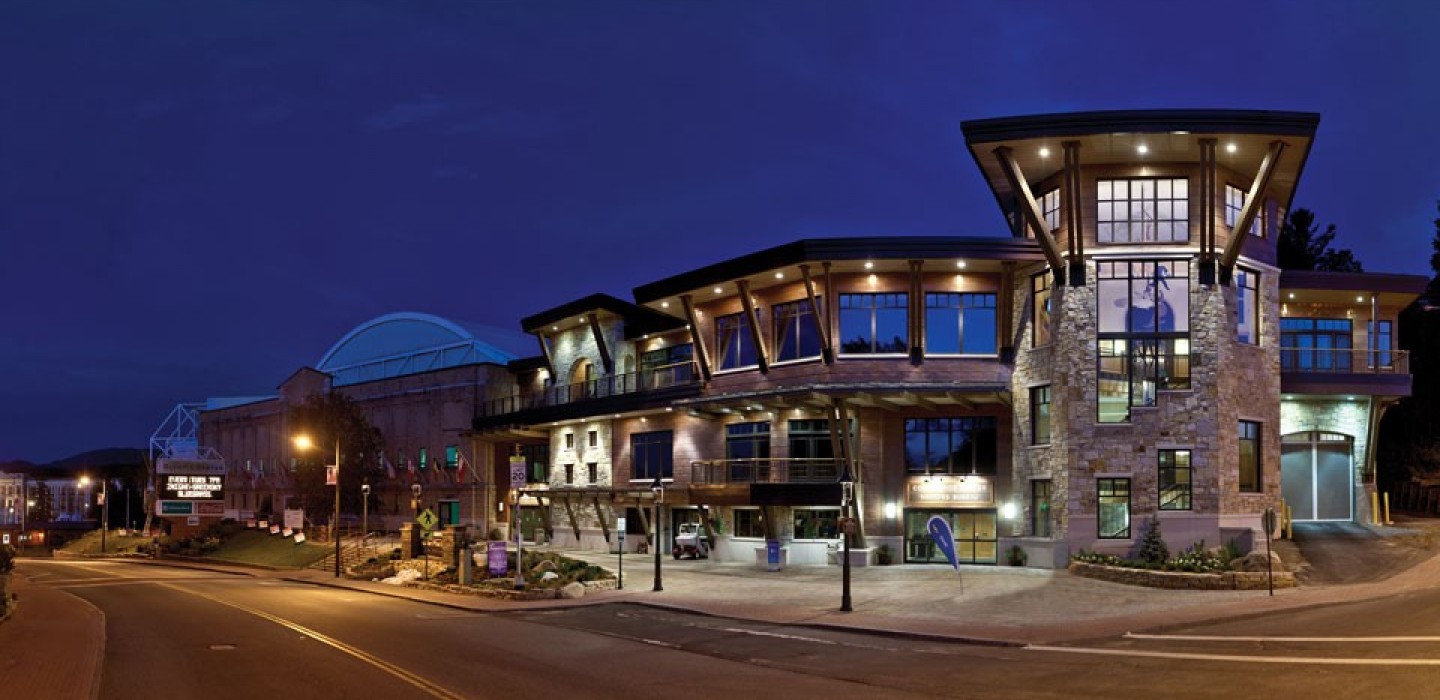 Back downtown, the Conference Center at Lake Placid opened in May of 2011 with over 90,000 square feet of flexible meeting and event space, including the 9,000-square-foot Lussi Ballroom, three different indoor and outdoor pre-function spaces, 12 breakout rooms and connection to both the 1932 Jack Shea Arena and the 1980 Herb Brooks Arena, each offering 20,000 square feet of unobstructed function space. With numerous major chain hotels nearby and direct access to Main Street’s many shops and restaurants, the Conference Center provides Lake Placid with a first-class meeting and event complex that has already attracted a number of major conferences and conventions.
Back downtown, the Conference Center at Lake Placid opened in May of 2011 with over 90,000 square feet of flexible meeting and event space, including the 9,000-square-foot Lussi Ballroom, three different indoor and outdoor pre-function spaces, 12 breakout rooms and connection to both the 1932 Jack Shea Arena and the 1980 Herb Brooks Arena, each offering 20,000 square feet of unobstructed function space. With numerous major chain hotels nearby and direct access to Main Street’s many shops and restaurants, the Conference Center provides Lake Placid with a first-class meeting and event complex that has already attracted a number of major conferences and conventions. 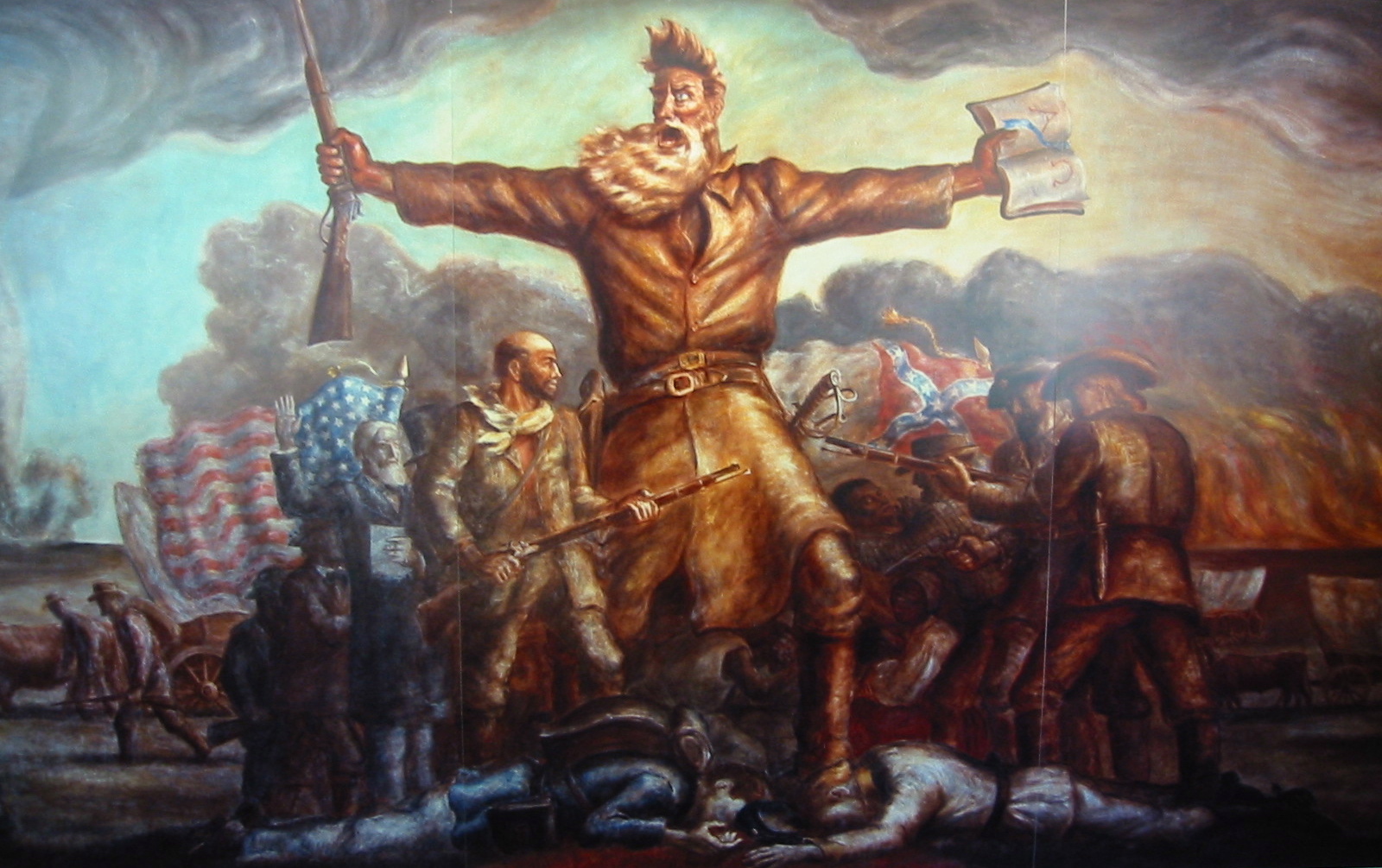 John Brown’s Body
John Brown’s Body
In addition to the Olympics, Lake Placid has another lesser-known, more intriguing claim to fame: It was here in 1849 that a failed wool broker from Massachusetts named John Brown brought his family to live on a 250-acre farm just down the road in North Elba, purchased from abolitionist and philanthropist Gerrit Smith. Smith had acquired 120,000 acres around Lake Placid in 1846 to offer to freed slaves for homesteading, and Brown offered to act as a teacher and mentor.
His stay, however, was short-lived. After numerous trips west to help his sons in the fight to make Kansas a free state, he left the family farm permanently and in 1859 staged the raid on the federal arsenal at Harper’s Ferry for which he became famous. Unfortunately, it was not for the reason he’d hoped (helping spark an armed revolt by slaves and radical abolitionists), but for being arrested and hanged for treason, his legend later growing into that of the fiery, anti-slavery figurehead captured in the unforgettable mural in the Kansas Statehouse by John Steuart Curry.
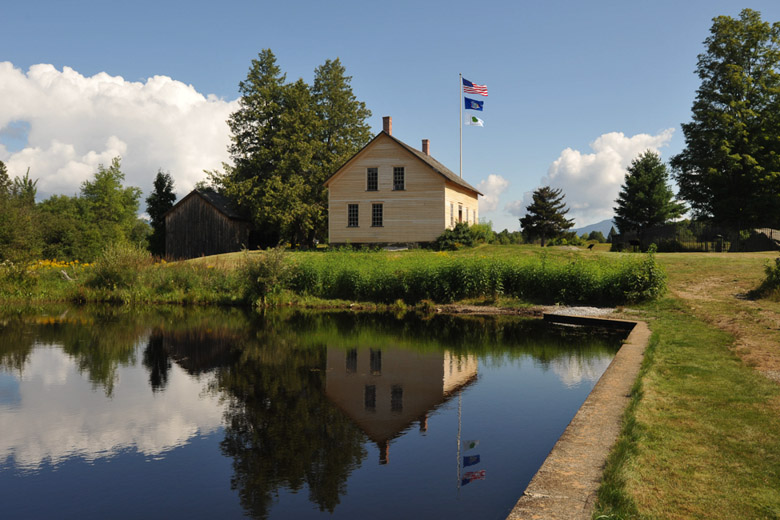 The thing that most folks don’t know is that the John Brown Farm, now a New York State Historic Site and U.S. National Historic Landmark, is also Brown’s final resting place, his body retrieved by his wife and family and returned to North Elba for burial next to his home here. Strange that a place so far removed from the politics, passions, skirmishes and struggles of the run-up to the Civil War should be the place where “John Brown’s body lies a-mouldering in the grave,” as the popular Union marching song goes, sung to the tune of what would later be rechristened The Battle Hymn of the Republic, with a different set of lyrics supplied by civil rights activist Julia Ward Howe.
The thing that most folks don’t know is that the John Brown Farm, now a New York State Historic Site and U.S. National Historic Landmark, is also Brown’s final resting place, his body retrieved by his wife and family and returned to North Elba for burial next to his home here. Strange that a place so far removed from the politics, passions, skirmishes and struggles of the run-up to the Civil War should be the place where “John Brown’s body lies a-mouldering in the grave,” as the popular Union marching song goes, sung to the tune of what would later be rechristened The Battle Hymn of the Republic, with a different set of lyrics supplied by civil rights activist Julia Ward Howe.
The modest house built by Brown’s son-in-law in 1855 is still here, and just a few feet away you’ll find the gravestone that marks this famous American’s burial site. You can see the farm clearly from atop the ski jump tower at the Olympic Jumping Complex, looking southeast across the valley, just off Route 35. On the historic property itself you’ll also find the graves of a handful of Brown’s followers who fought and died at Harper’s Ferry, their remains relocated to the small graveyard in 1899.
 Isolated Beauty
Isolated Beauty
The Brown Farm is also home to a number of walking trails, ranging in length from 0.3 miles to just under 2 miles. It’s a great way to get acquainted with the history of the area, and these picturesque walks make it easy to see why Brown and others were drawn to the Adirondacks and the isolated beauty of the area. In fact, residents like to say they’re “two hours from everywhere,” meaning Albany, NY, Burlington, VT, and Montreal—all great hubs if you’re looking to bring in a larger group, making this a true getaway destination with unique teambuilding and bonding opportunities.
Lake Placid has numerous other outdoor diversions unrelated to the Olympics or the John Brown Farm. One such locale, Mirror Lake, is the focal point of downtown Lake Placid, which hugs its western shore. Note: Mirror Lake is often mistakenly referred to as “Lake Placid,” which is actually far larger and lies about a mile due north of town. For walkers, the 2.7-mile Mirror Lake Trail follows a red brick sidewalk along the shoreline, starting in Peacock Park and passing by the old Lake Placid Club property, numerous grassy fields, boat launches, residential areas and lots of prime Adirondack scenery. At certain points on your hike you’ll find gray stones embedded in the brick walk, each bearing the name of one of the Adirondacks’ highest peaks, as well as strategically placed stone benches that provide resting spots along the way.
These are just a few of the more than three dozen 1-2 hour hikes listed on the LakePlacid.com website, which is also a great source of information on dining, lodging, events and numerous other activities in the area.







